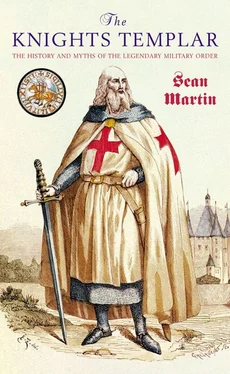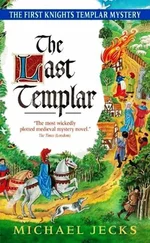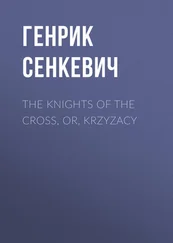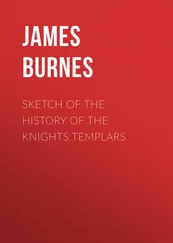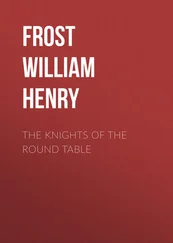Sean Martin - The Knights Templar
Здесь есть возможность читать онлайн «Sean Martin - The Knights Templar» весь текст электронной книги совершенно бесплатно (целиком полную версию без сокращений). В некоторых случаях можно слушать аудио, скачать через торрент в формате fb2 и присутствует краткое содержание. Год выпуска: 2004, ISBN: 2004, Жанр: История, на английском языке. Описание произведения, (предисловие) а так же отзывы посетителей доступны на портале библиотеки ЛибКат.
- Название:The Knights Templar
- Автор:
- Жанр:
- Год:2004
- ISBN:1-904048-28-5
- Рейтинг книги:3 / 5. Голосов: 1
-
Избранное:Добавить в избранное
- Отзывы:
-
Ваша оценка:
- 60
- 1
- 2
- 3
- 4
- 5
The Knights Templar: краткое содержание, описание и аннотация
Предлагаем к чтению аннотацию, описание, краткое содержание или предисловие (зависит от того, что написал сам автор книги «The Knights Templar»). Если вы не нашли необходимую информацию о книге — напишите в комментариях, мы постараемся отыскать её.
The Knights Templar — читать онлайн бесплатно полную книгу (весь текст) целиком
Ниже представлен текст книги, разбитый по страницам. Система сохранения места последней прочитанной страницы, позволяет с удобством читать онлайн бесплатно книгу «The Knights Templar», без необходимости каждый раз заново искать на чём Вы остановились. Поставьте закладку, и сможете в любой момент перейти на страницу, на которой закончили чтение.
Интервал:
Закладка:
Theobald was elected Grand Master at Sidon by the remaining Templars there. A large Mamluk force appeared, and the Templars retreated to their stronghold. It was decided that Theobald would sail for Cyprus and bring back reinforcements. However, no reinforcements were forthcoming from Cyprus, only a message that it would be wise to leave the Holy Land; the Templars abandoned Sidon on 14 July. Haifa fell on the 30th, leaving only Tortosa and ’Atlīt in Templar hands. They were effectively cut off, and had no choice but to evacuate: Tortosa was abandoned on 3 August, and the impregnable ’Atlīt on 14 August. When the Mamluks reached ’Atlīt, they dismantled it for fear that the Templars should return and reoccupy the one castle that had defeated even Baybars. But their fears proved unfounded. When Acre fell, Outremer had fallen with it. The Templars would never return to the Holy Land.
Fall and Trial (1291–1314)
Theobald Gaudin did not long survive the loss of Acre. He died on 16 April, either in 1292 or 1293, and was succeeded by the man who – along with Hugues de Payen – is perhaps the best known Grand Master of the Order, Jacques de Molay. Jacques was probably around 50 years old when he was elected to the position, almost certainly in a Chapter Meeting at the Order’s new headquarters at Limassol on Cyprus. He had joined the Templars some three decades before, being initiated at Beaune in Burgundy in 1265 by Humbert of Pairaud, then Master in England, and Amaury La Roche, Master in France. From what is known about him, he appears to have been very much an ‘old school’ Templar, being a Master who was concerned solely with the restoration of Outremer, a position in marked contrast to that of the political machinations of Guillame de Beaujeu (but in fairness to Guillame, the Holy Land was still in Christian hands during his tenure as Master, and Molay faced a very different set of circumstances upon his accession to the post). Molay supported Pope Nicholas IV’s calls for a new crusade, and much of his Mastership until 1307 was concerned with trying to re-establish a Frankish presence on the mainland (the only Christian-held territory being the Templar garrison on the small island of Ruad, just off the coast from Tortosa). 27 27 Although the Fall of Acre is usually seen as the end of the Christian presence in the East, there was one remaining Christian stronghold in mainland Syria after 1291, the Templar castle of La Roche Guillame, in the Amanus March, which held out against all odds until 1299. See Malcolm Barber and Keith Bate, The Templars: Selected Sources (MUP, 2002), p.15.
The Templars after 1291
With the seemingly only temporary loss of Outremer, talk was rife that the main military orders would have to merge, as the incessant bickering between the Temple and the Hospital was seen as one of the causes of the loss of the Holy Land. Neither order was keen on the idea, and the years immediately following 1291 saw the Templars, Hospitallers and Teutonic Knights trying to establish themselves in new territories and, in the case of the latter two orders, redefining their objectives. The Hospitallers cast themselves in a maritime role, making the Mediterranean their main sphere of operations. While initially based on Cyprus, in 1306 they invaded the island of Rhodes, making it their base three years later, a move that ensured them a relatively high degree of autonomy away from the interference of Rome and the kings of Europe. The Teutonics, meanwhile, decamped first to Venice and then to Marienburg in Prussia, where they devoted themselves entirely to the crusade against the pagans in the Baltic. Not only were they far away from Rome, they also fortified their position by the creation of Prussia as the Ordensland : this was literally a country created and run by a military order, something the Templars had long wanted to do.
The Languedoc had been the Templars’ favoured location for a state of their own for some decades before the Fall of Acre, but they found themselves in the short term also on Cyprus. Although they had sold the island back to Richard the Lionheart in 1192, they had retained properties there, and Limassol became their new headquarters. However, the ghosts of the 1190s had not been entirely laid to rest, and the Order soon found itself enmeshed in local politics. King Henry of Cyprus was far from delighted to have the most powerful and feared military machine of the day arriving on his doorstep, and in 1298 he made an official complaint about the Templars’ behaviour, citing the usual offences of arrogance and greed. In 1306 there was a coup, in which Henry was forced to abdicate in favour of his brother Amaury, who was supported by the Templars.
Jacques de Molay’s first major undertaking as Grand Master was to travel to the West in 1294–95 to reinforce support for the Order. He arrived in Rome in December 1294, just as a new pope, Boniface VIII, was being invested. Boniface granted the Templars the same privileges in Cyprus as they had held in Outremer, which pleased Jacques de Molay, if not King Henry. Further help was at hand on the Italian peninsula: Charles II of Naples exempted the Order from paying taxes on exports of food. With such offers of help coming in, Jacques wasted no time in writing to every other monarch in Europe. He travelled to Paris and London, where Edward I promised that he would provide a crusading army once he had dealt with the French and the Scots. He also exempted the Order from paying export tax on funds that were going from the London Temple to Cyprus.
As with earlier crusades, the Templars played a central role in the build-up of a military presence in the East beginning in 1300. It was widely believed that the Mongols would return to the Holy Land, wrest Jerusalem from Mamluk control, and hand it back to the Franks. The Templars began to pave the way for a possible attack with a series of raids during the summer of 1300 on the coastal cities of Egypt and Syria, and in November they began preparations for an invasion of the mainland. Six hundred knights were sent to Ruad with orders to wait for news of the expected arrival of a combined force of Mongols under the Il-khan Ghazan and Armenians under King Hetoum. When the Mongols and Armenians did finally reach Tortosa in February 1301, they found no one there to greet them – with no sign of the reinforcements, the Templars had given up and gone back to Cyprus. To make the situation worse, the use of Ruad in this abortive campaign had alerted the Mamluks in Egypt to the strategic importance of the island, and, in 1302, the garrison there was wiped out by a Mamluk attack. It was the loss of the very last Templar holding in Outremer.
The Arrests
The spectre of merging the Temple with the Hospital returned with the investiture of Clement V as pope in November 1305. He invited both Jacques de Molay and Fulk de Villaret, the Grand Master of the Hospital, to write and explain their views on the matter. To Jacques de Molay, the idea was untenable. In his mémoire to the Pope, dictated in 1306, he examined the case for and against a merger, and concluded that the two orders, while having similar goals, would function better if they remained independent. Clement also requested de Molay’s opinion on a new crusade, to which the Grand Master responded with a second mémoire. Crusades in the past had generally been either a passagium generale , where everyone was free to join, such as the First Crusade, or a passagium particulare , in which a limited number of professional soldiers would attack a specific target, which was usually the case with most of the later crusades. De Molay went against the prevailing opinion of the time and suggested that – given the loss of Ruad – the passagium generale was the only viable option. Clement was not convinced, and summoned both de Molay and de Villaret to France to meet to discuss the matter further. The meeting – planned for All Saints’ Day 1306 – had to be postponed when the Pope suffered an attack of gastro-enteritis. De Molay arrived in the West in either late 1306 or early 1307. Fulk de Villaret, detained by the Hospital’s campaigns on Rhodes, did not arrive until late summer.
Читать дальшеИнтервал:
Закладка:
Похожие книги на «The Knights Templar»
Представляем Вашему вниманию похожие книги на «The Knights Templar» списком для выбора. Мы отобрали схожую по названию и смыслу литературу в надежде предоставить читателям больше вариантов отыскать новые, интересные, ещё непрочитанные произведения.
Обсуждение, отзывы о книге «The Knights Templar» и просто собственные мнения читателей. Оставьте ваши комментарии, напишите, что Вы думаете о произведении, его смысле или главных героях. Укажите что конкретно понравилось, а что нет, и почему Вы так считаете.
